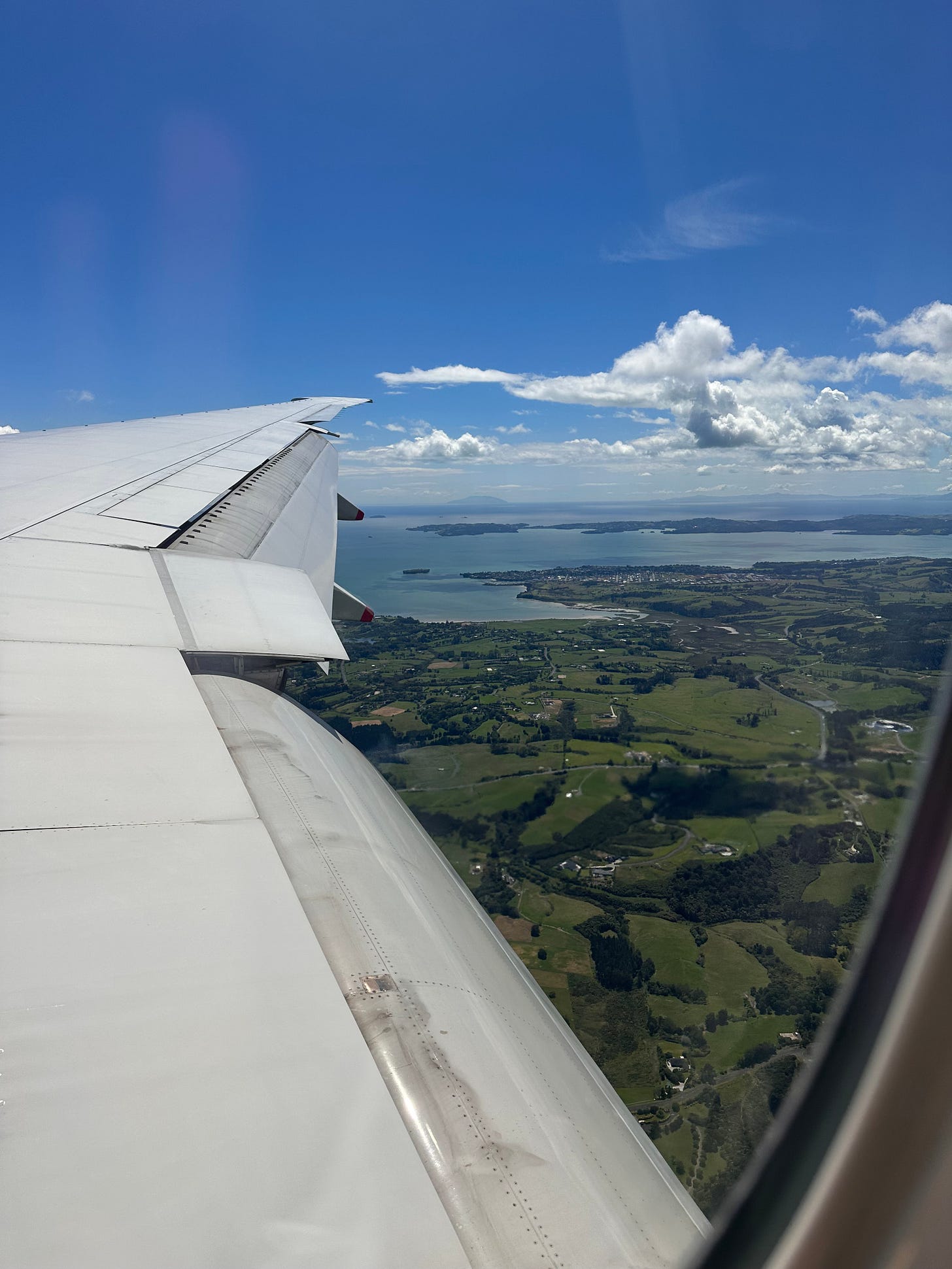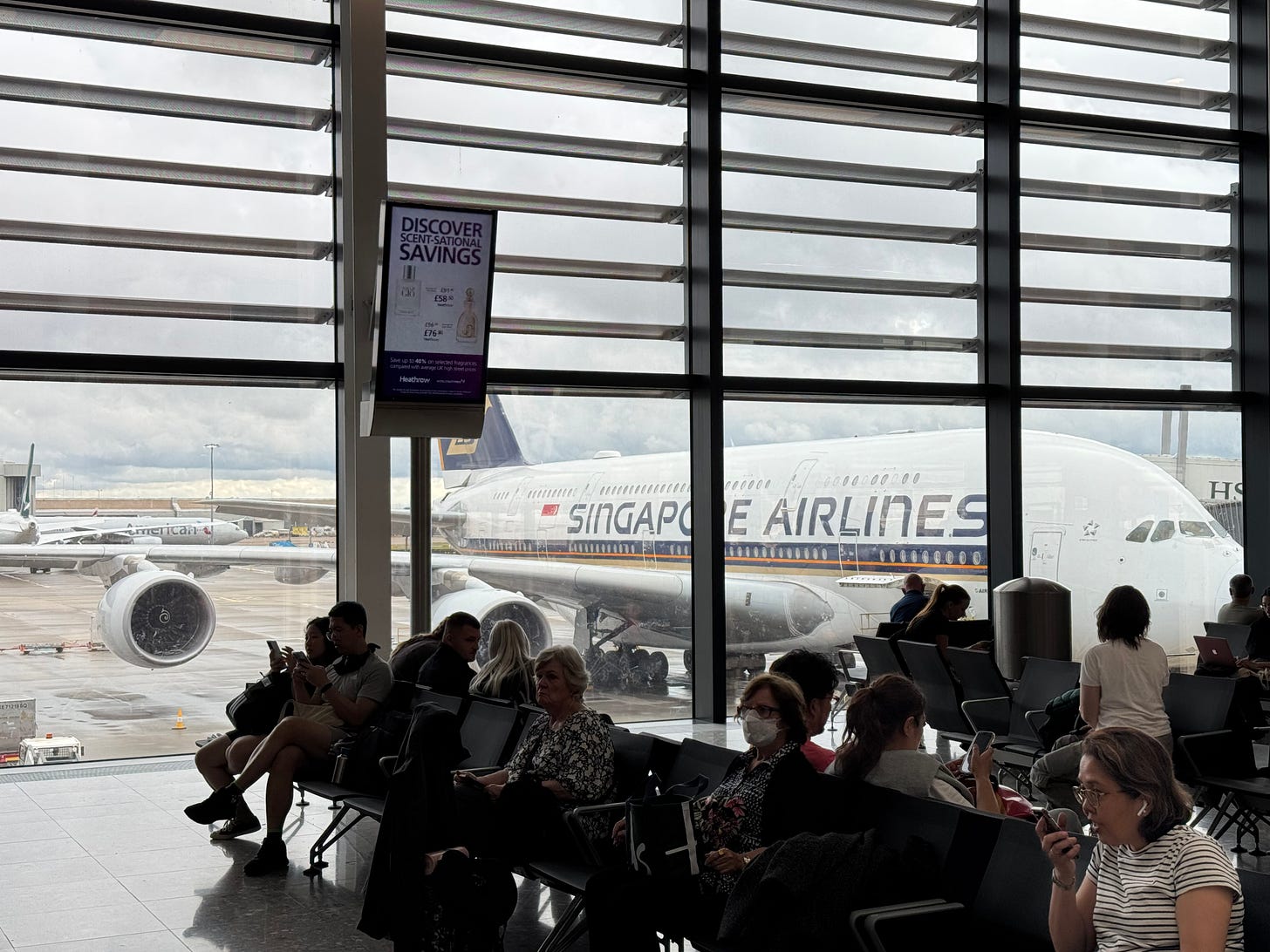Flying Smart: Strategies to Maintain Energy and Performance While Traveling
Minimizing Fatigue, Maximizing Recovery, and Staying at Your Best in the Air
Abstract
After spending hundreds of hours in the air, I’ve learned how to manage the toll flying takes on my body. From dehydration to jet lag, the challenges are real—but with the right habits, they’re manageable. In this article, I share the strategies I use to stay energized, recover faster, and feel my best after every flight.
Introduction
In 2024, I spent approximately 200 hours in the air—more than eight days, meaning I spent 2% of my year sitting on a plane. It was roughly the same in 2023 and 2022.
Over time, through trial and error, I have learned how to maintain high energy levels, which I’ve discovered is the key to feeling good and performing well.
In this article, I want to share my experience in managing the impact of air travel on the body and provide you with practical tips to ensure you perform at your best once you land.
Flying is extremely stressful for both the body and the brain. Let’s explore why that is and what countermeasures can help mitigate its effects.
Discussion
Whether you’re traveling for business or a vacation with your family, flying has a significant impact on your body—even if you don’t always notice it. The three primary factors that contribute to this are:
• Altitude and Reduced Oxygen Levels → As the plane climbs, the cabin pressure is adjusted to mitigate the effects of altitude, but the amount of oxygen in the air decreases significantly.
• Low Humidity and Dehydration → The air inside an airplane has very low humidity, which can lead to rapid fluid loss. You may have experienced a dry throat or nasal passages, especially on flights longer than three hours.
• Jet Lag → The most well-known effect of flying long distances, particularly on intercontinental or long-haul flights. Jet lag occurs when our internal clock becomes misaligned with the local time at our destination, causing fatigue, difficulty sleeping, and mood swings.
Now, let’s analyze each of these effects and what I have learned to do (or avoid) to mitigate them.
Adapting to Altitude
Like many effects of flying, the impact of altitude changes is highly subjective. You may have noticed this while visiting high-altitude locations—some people struggle significantly, while others feel little to no effect. It largely depends on respiratory capacity and overall health, and the same applies to flying.
I’ve found that if I’m feeling unwell or have slept poorly before a flight, the effects of altitude hit me much harder.
For example, if I have a cold, nasal congestion makes it more difficult to adapt to air pressure changes, sometimes causing pain during takeoff or landing, as well as headaches.
In short: if you’re not feeling well before flying, chances are you’ll feel worse during and after the flight.
Additionally, I’ve noticed on several occasions that altitude stress weakens the immune system, making it much easier to catch bacterial or viral infections during travel.
How to Mitigate These Effects?
Rule number one: If you’re not feeling well, don’t fly!
Dr. Alves, an aviation medicine expert, offers the same advice: “Many of the heart attacks we see in flight could have been prevented. In hindsight, the person often admits, ‘I wasn’t feeling well before boarding.’”
If you’re feeling fine or only have minor discomfort, my advice is to ensure a good night’s sleep before your flight. If possible, do a workout 6-7 hours before departure—it helps with relaxation.
For short flights, I completely avoid eating onboard, as airplane food is generally not great. I usually fly economy on short routes, but even when in business class, I try to skip the meals.
For daytime flights longer than 4-5 hours, I have lunch or dinner either in-flight or at the lounge, strictly avoiding alcohol and minimizing carbohydrate intake. Both alcohol (wine, beer) and carbs (pasta, sugars) increase heart rate and make altitude adaptation even more difficult.
For overnight long-haul flights, like this one from Singapore to Milan where I’m writing this article, I eat at home before heading to the airport and then avoid food entirely—both in the lounge and on the plane. I drink only water and try to sleep as soon as possible, skipping the in-flight dinner.
A sleep mask and good-quality earplugs are essential to sleeping well on your own schedule—especially when flight attendants are rolling carts around for a meal you don’t want. I’ll include links to the ones I use in the references, as I’ve tested many and finally found the best options.
Dehydration
Dehydration is primarily caused by altitude and low humidity levels in the cabin. For me, this is the most difficult challenge to manage.
Years ago, I thought drinking a good glass of red wine—or maybe even a couple of glasses of champagne in the lounge or onboard—would help me sleep. If you haven’t already, check out my journey with alcohol.
I now know this was a major mistake when it comes to limiting dehydration. Alcohol metabolism drastically reduces water levels in the body, compounding the dehydration effects of flying. Instead of sleeping well, you’ll experience shallow breathing, an elevated heart rate, and—despite dozing off due to alcohol’s sedative effects—poor sleep quality (zero REM and deep sleep). The result? You wake up feeling even more exhausted.
To combat dehydration, I drink as much water as possible before and during the flight. However, I’m careful not to overdo it—especially on flights with heavy turbulence, as I might be stuck waiting a long time before I can use the restroom!
With in-flight meals, I usually opt for sparkling mineral water, which aids digestion.
Additionally, because altitude diminishes our taste sensitivity, airplane food is often much saltier than we realize, further increasing dehydration.
A good solution is to bring a refillable water bottle and fill it up at the gate before boarding.
One last tip: I avoid brushing my teeth with airplane water—it’s not potable, and I’ve learned it’s best to avoid it altogether. Instead, I use bottled water for brushing.
Jet Lag and Time Zone Changes
Jet lag is an unavoidable challenge for travelers crossing multiple time zones, with both physical and mental effects. It occurs when our circadian rhythm—our internal clock—suddenly becomes misaligned with the local day-night cycle. Common symptoms include fatigue, mood swings, and sleep disturbances, and the older we get, the harder it becomes to recover.
Traveling east is generally more challenging than traveling west. When flying east, you have to wake up earlier than your body is used to, whereas flying west means staying up later, which is typically easier.
For example, when I arrive in Milan from Singapore in the morning, I’ve experienced an extra-long night, as I went to bed very late. In contrast, when flying back from Milan to Singapore, I leave at lunchtime and arrive early in the morning, but sleeping onboard is difficult because my body isn’t ready to rest when it’s still afternoon in Milan.
Strategies to Reduce Jet Lag
Jet lag can’t be eliminated entirely, but with the right preparation, its effects can be minimized. Over the years, I’ve tested various strategies, and small adjustments have made a significant difference.
Preparation starts before boarding. If I’m traveling east (which is harder to adjust to), I gradually shift my wake-up time earlier in the days leading up to my flight. This helps my body ease into the new day-night cycle. Conversely, if I’m flying west, I try to go to bed and wake up later in the days before departure.
Once I arrive, physical activity is my first step to combating jet lag. Exercising in the morning helps my body sync with the new time zone. It doesn’t have to be an intense workout—even a brisk walk or light cardio helps signal that the day has begun.
Light exposure is another crucial but often overlooked factor. Properly managing sunlight can mean the difference between smooth adaptation and debilitating jet lag.
For very short trips (less than three days), the best approach is often to not adjust at all—sticking to my home time zone reduces unnecessary strain on my circadian rhythm.
By gradually adjusting sleep schedules, exercising after arrival, managing light exposure, and avoiding unnecessary adaptation for short stays, I’ve found a sustainable way to handle jet lag more effectively.
Conclusions
Frequent flying takes a toll on the body, but with the right strategies, it doesn’t have to drain your energy or performance. Through trial and error, I’ve found that small adjustments—prioritizing sleep, staying hydrated, avoiding alcohol, managing light exposure, and timing meals strategically—make a huge difference.
The key takeaway? Flying is stressful, but it doesn’t have to leave you exhausted. With mindful preparation and smart choices, you can step off the plane feeling refreshed and ready to go, whether it’s for business, training, or simply enjoying your destination.






let me also try to do it💪
Really good read, I like it!